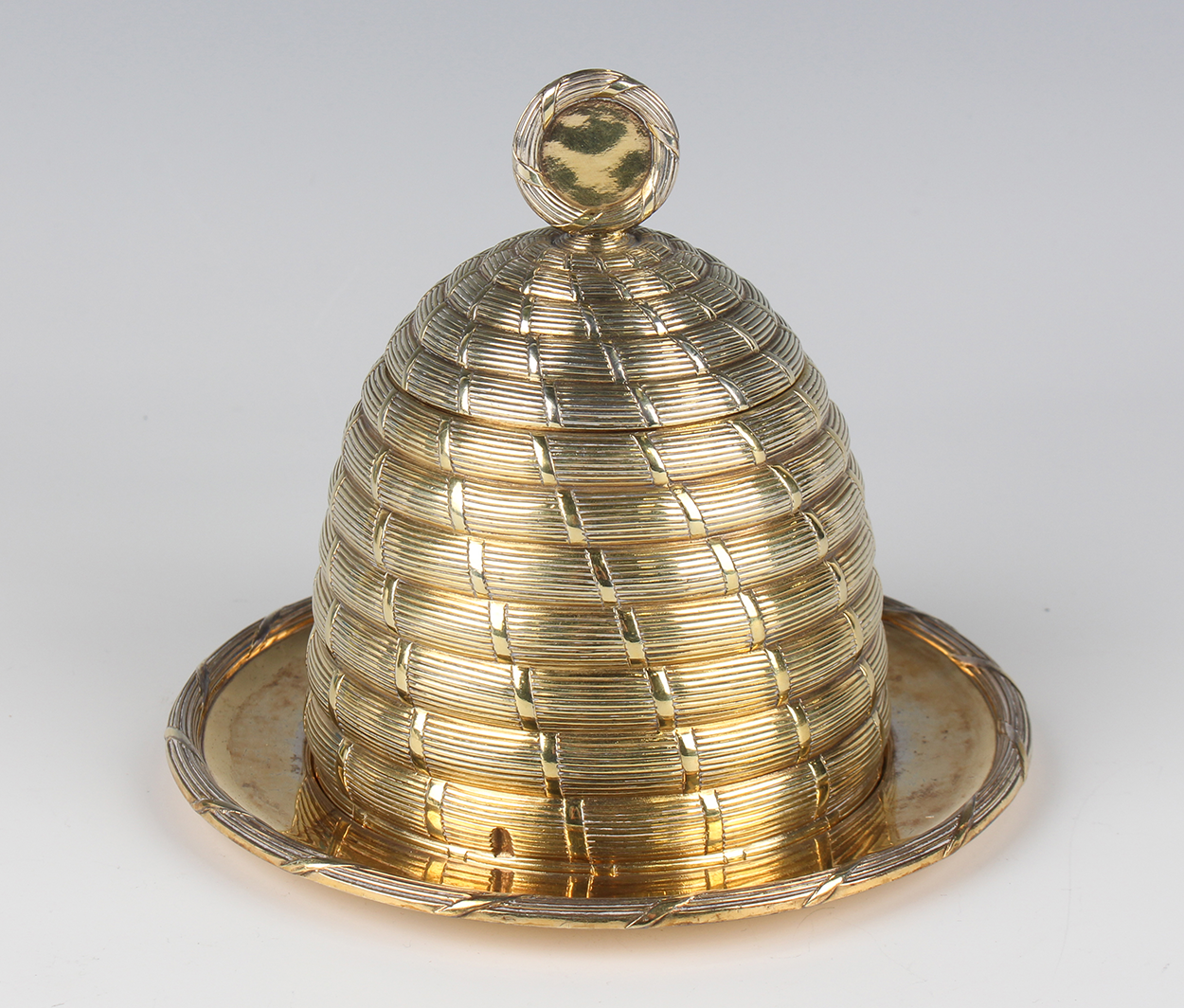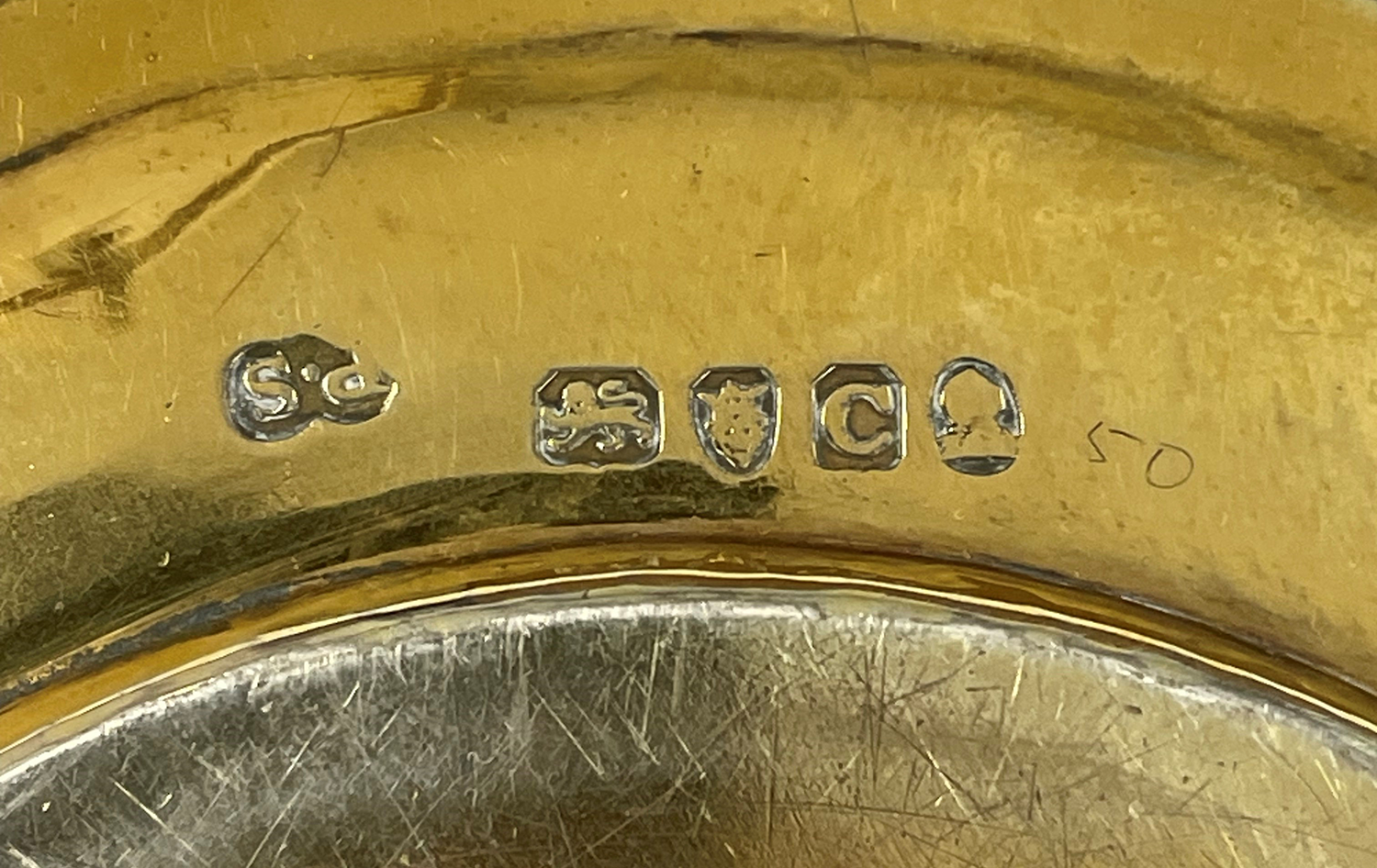
During the first half of the 19th century, Paul Storr (1770 to 1844) was the most celebrated silversmith in England and his work is unsurpassed.
The George III silver gilt honeypot and stand you see here is by Paul Storr. Made in the form of a bee skep. It measures just 11.5cm high and is beautifully conceived and modelled. The wreath finial has a plain cartouche but on other Paul Storr honeypots like this one it is often engraved with a crest.
My wife’s grandparents and Uncle Maurice were celebrated beekeepers on the island of Jersey so this object speaks into some precious memories for me.
The history of bee skeps is thought to go back some 2000 years. From the Middle Ages bee skeps were made of straw to keep bees in before the invention of the beehive in 1851. Today skeps are mostly used for collecting swarms of bees.
This naturalistic object is bound up with the Romanticism and ideas of the rural idyll prevalent in the early 19th century which placed an emphasis on our emotional response to the beautiful and sublime which contrasted with the effects of the Industrial Revolution, urbanisation and the rationalism of the Enlightenment.

Alongside the leopards mask of the London assay office, the Lion Passant silver mark and date letter for 1798 is the Paul Storr maker’s mark PS which remained relatively unchanged throughout his career. This honeypot was only made a year before Paul Storr was commissioned to make the ‘Battle of the Nile cup’ for presentation to Lord Nelson in 1799.
Today pieces from Paul Storr’s workshops can be found at the Duke of Wellington’s London home, Apsley House, as well as Windsor Castle, Buckingham Palace, Arundel Castle and museums around the world.
In 1807 Paul Storr joined Philip Randall at Randall Bridge and Randall. It was the leading firm of silversmiths in the early 19th century. It held the Royal Warrant from 1806. Working here Paul Storr would produce silver objects for both George III and George IV.
In 1819 he left the firm to regain his artistic freedom producing beautiful naturalistic pieces. In 1822 he partnered with John Mortimer founding Storr and Mortimer in 1822 with retail premises in New Bond Street, London.
Paul Storr’s remarkable talents are still revered by collectors today and the silver-gilt skep honeypot has just sold at Toovey’s for £10,400.

